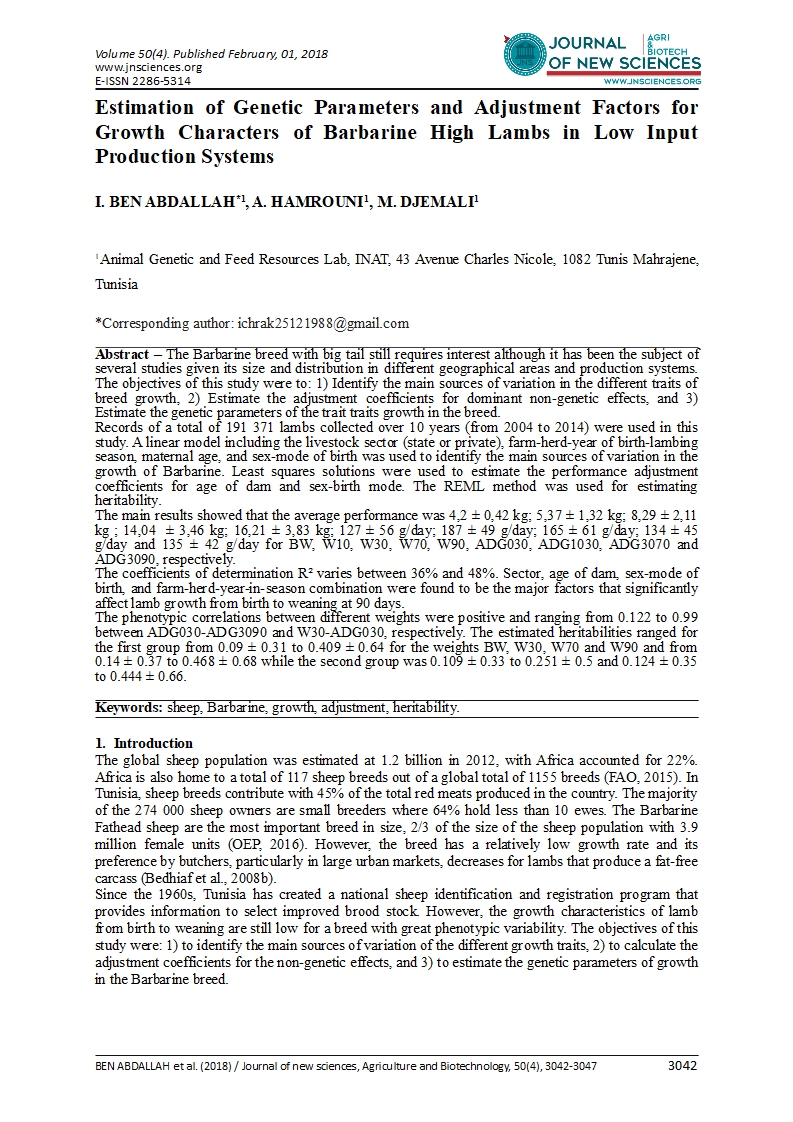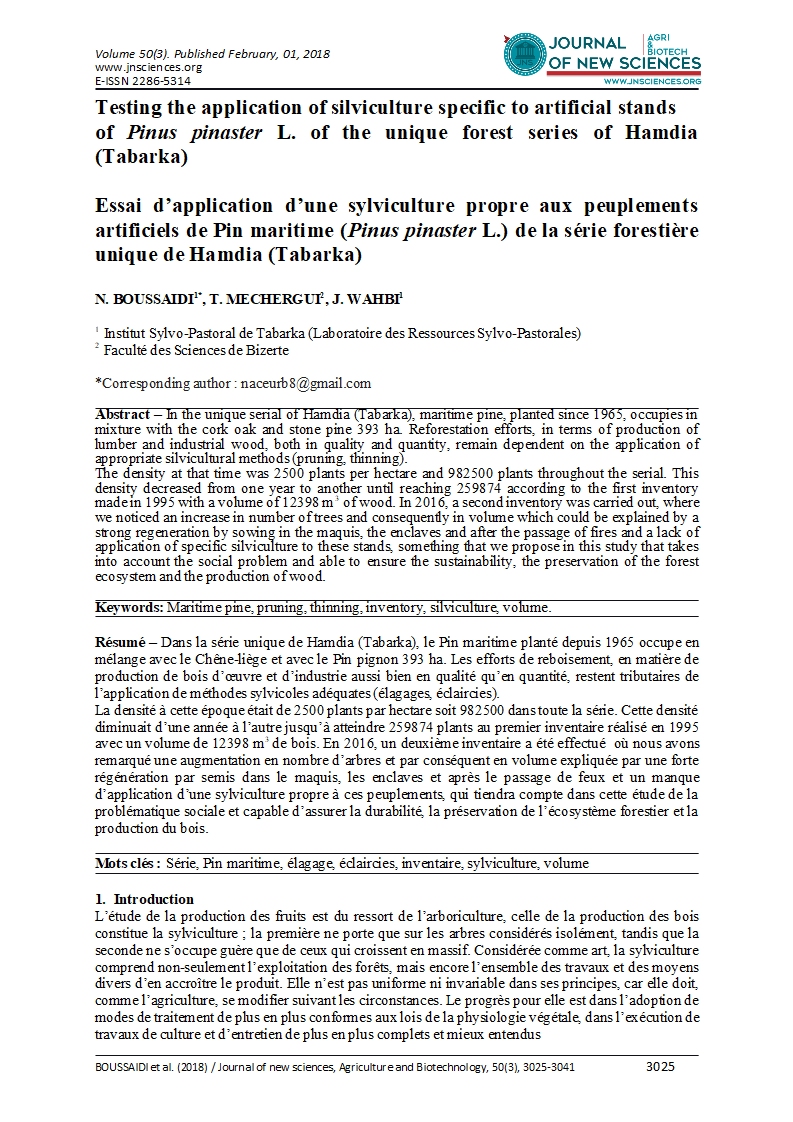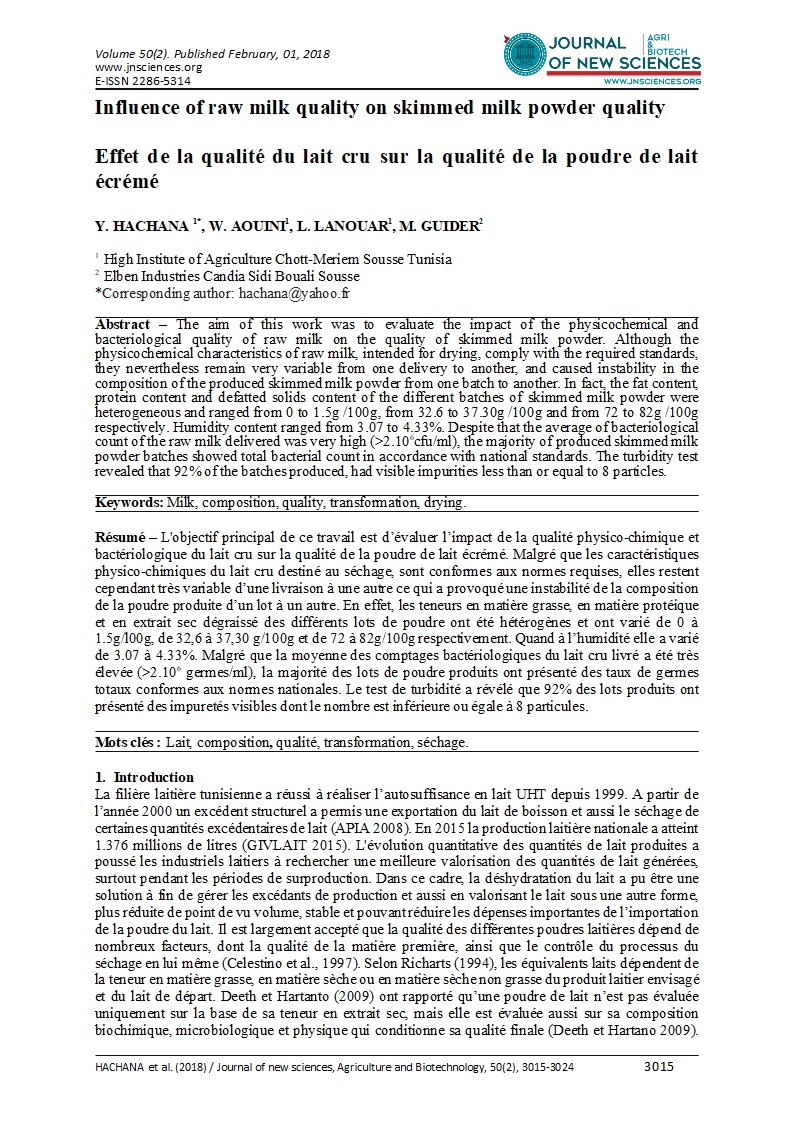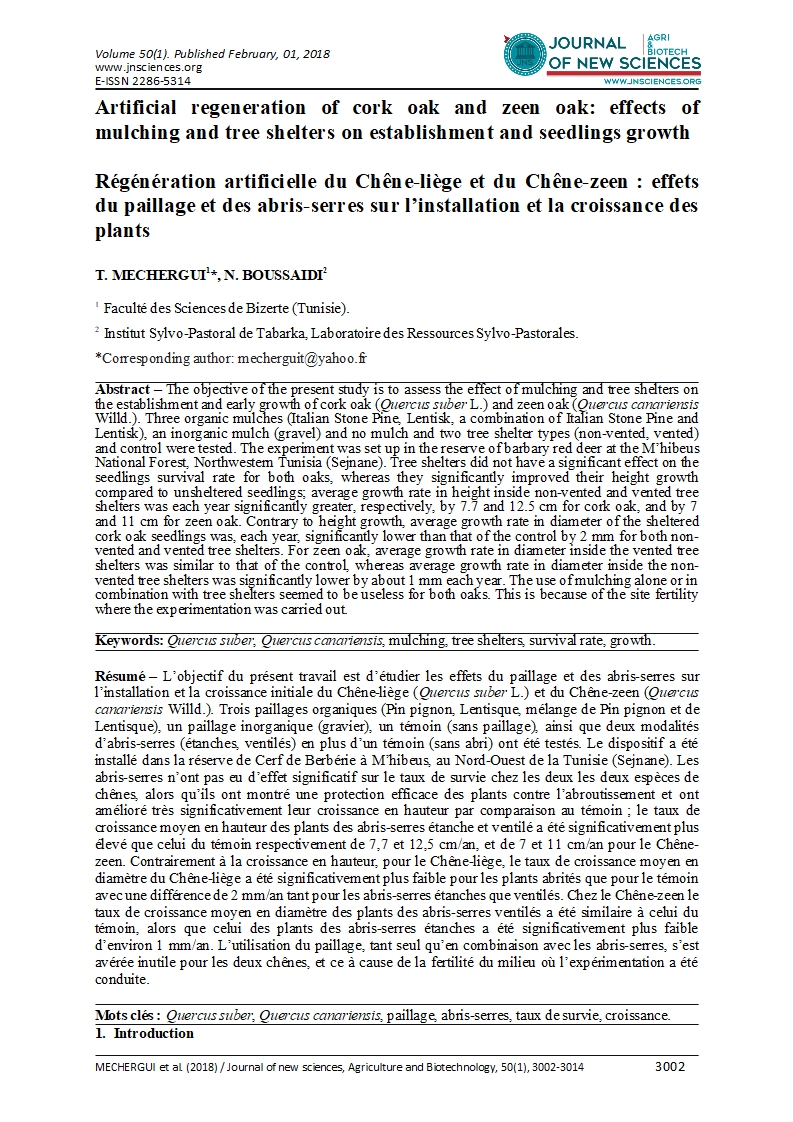- Category: Volume 50
- Hits: 6992
The Estimation of Lactation Curve Parameters according to Season of Calving in Holstein Cows under North Africa Environmental Conditions: The case of Tunisia
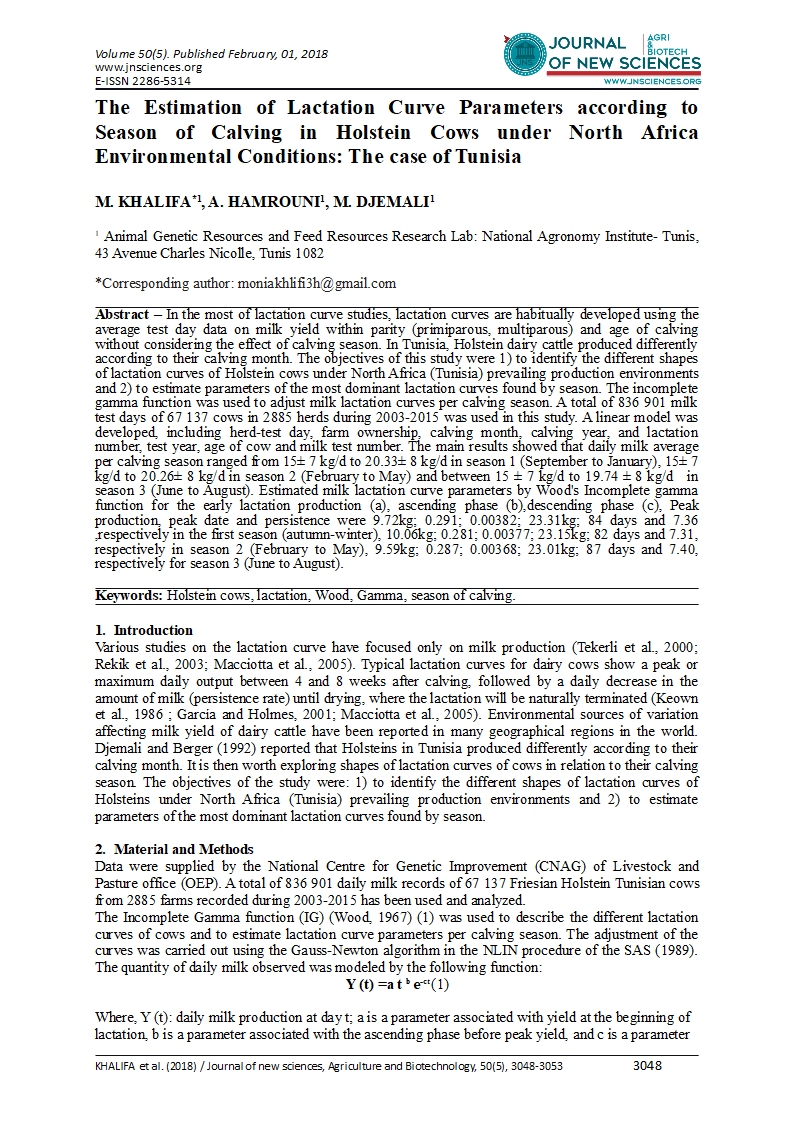
M. KHALIFA1
A. HAMROUNI1
M. DJEMALI1
1 Animal Genetic Resources and Feed Resources Research Lab: National Agronomy Institute- Tunis, 43 Avenue Charles Nicolle, Tunis 1082
Abstract – In the most of lactation curve studies, lactation curves are habitually developed using the average test day data on milk yield within parity (primiparous, multiparous) and age of calving without considering the effect of calving season. In Tunisia, Holstein dairy cattle produced differently according to their calving month. The objectives of this study were 1) to identify the different shapes of lactation curves of Holstein cows under North Africa (Tunisia) prevailing production environments and 2) to estimate parameters of the most dominant lactation curves found by season. The incomplete gamma function was used to adjust milk lactation curves per calving season. A total of 836 901 milk test days of 67 137 cows in 2885 herds during 2003-2015 was used in this study. A linear model was developed, including herd-test day, farm ownership, calving month, calving year, and lactation number, test year, age of cow and milk test number. The main results showed that daily milk average per calving season ranged from 15± 7 kg/d to 20.33± 8 kg/d in season 1 (September to January), 15± 7 kg/d to 20.26± 8 kg/d in season 2 (February to May) and between 15 ± 7 kg/d to 19.74 ± 8 kg/d in season 3 (June to August). Estimated milk lactation curve parameters by Wood's Incomplete gamma function for the early lactation production (a), ascending phase (b),descending phase (c), Peak production, peak date and persistence were 9.72kg; 0.291; 0.00382; 23.31kg; 84 days and 7.36 ,respectively in the first season (autumn-winter), 10.06kg; 0.281; 0.00377; 23.15kg; 82 days and 7.31, respectively in season 2 (February to May), 9.59kg; 0.287; 0.00368; 23.01kg; 87 days and 7.40, respectively for season 3 (June to August).
Keywords: Holstein cows, lactation, Wood, Gamma, season of calving.

